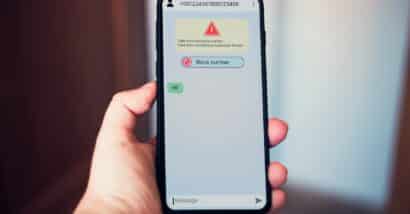 Every time you get a printed receipt, you can check the information at the bottom to ensure FACTA compliance. Making sure that your receipts follow the rules outlined in the Fair and Accurate Credit Transactions Act can help protect your important information, as well as that of others, keeping it safe from fraud and identity theft.
Every time you get a printed receipt, you can check the information at the bottom to ensure FACTA compliance. Making sure that your receipts follow the rules outlined in the Fair and Accurate Credit Transactions Act can help protect your important information, as well as that of others, keeping it safe from fraud and identity theft.
On top of that, coming forward to report FACTA violations may lead to financial compensation.
Checking for FACTA compliance is a relatively simple process, since the regulations are few and straightforward.
The Fair and Accurate Credit Transactions Act
The Fair and Accurate Credit Transactions Act, also known as FACTA, was passed in 2003 in order to limit the information printed on consumers’ credit card receipts and protect their account information. Businesses have been expected to be fully FACTA-compliant since 2006.
But FACTA compliance cannot be ensured by the rules alone—it also helps for customers to make a habit of checking their receipts to make sure that these rules were adequately followed. A FACTA violation can indicate that hundreds or thousands of other customers may also have been affected by the same violation.
Checking for FACTA Compliance
There are two important rules in FACTA that govern credit and debit card receipts. The first deals with the credit or debit card number. According to FACTA rules, the card number should be truncated, or shortened, to show no more than the last five digits, with the rest censored. Receipts may not display any numbers from anywhere else in the card number, even if it’s five digits or fewer.
Since credit card numbers are already divided into four-digit segments, many businesses choose to ensure their own FACTA compliance by censoring everything except the last four digits.
FACTA-compliant credit card numbers should look something like this:
**** **** **** 1234
or this:
**** **** ***1 2345
Since receipts cannot show digits from elsewhere in the card number, this is not allowed on a receipt, even though fewer than five digits are displayed:
1234 **** **** ****
Besides the card number itself, the other important piece of FACTA compliance is the card’s expiration date. Businesses must censor the entirety of the expiration date. Having any portion of the expiration date displayed is a violation of FACTA.
Filing a Lawsuit Over FACTA Compliance
Printing receipts is a largely automated process now, so businesses only have to make sure their machines are up-to-date to ensure FACTA compliance. After FACTA was enacted, companies were given a three-year grace period to get their machines in order.
While hand-written and manually run receipts are exempt from FACTA rules, these are rare enough that it is not much of a concern.
Consumers are in the best position to check for FACTA compliance. By reporting FACTA violations, a consumer may even be able to protect the information of others that may have been exposed as well.
Since the proof of FACTA violation is found printed clearly on the top or bottom of receipts, it is simple enough to acquire evidence. If your receipts do not follow FACTA regulations for both card numbers and expiration dates, then you may be able to file a complaint or a FACTA lawsuit over the violation.
Consumers who report violations of FACTA regulations may even be eligible for some kind of financial award of up to $1,000 per violation of FACTA receipt rules.
Free FACTA Class Action Lawsuit Investigation
If you made one or more purchases and the retailer provided you with a receipt that contained more than the last five digits of your credit or debit card number or the expiration date, you may be eligible for a free class action lawsuit investigation and to pursue compensation for these FACTA violations.
ATTORNEY ADVERTISING
Top Class Actions is a Proud Member of the American Bar Association
LEGAL INFORMATION IS NOT LEGAL ADVICE
Top Class Actions Legal Statement
©2008 – 2025 Top Class Actions® LLC
Various Trademarks held by their respective owners
This website is not intended for viewing or usage by European Union citizens.














